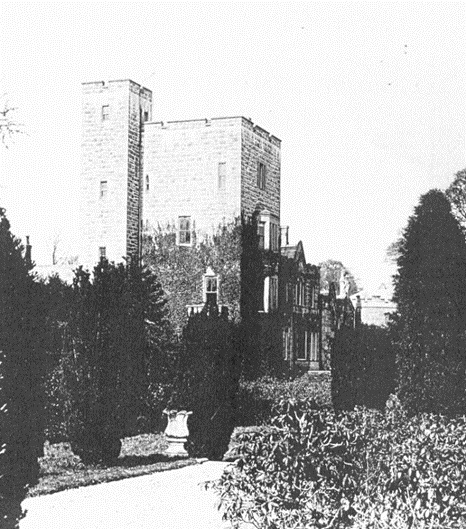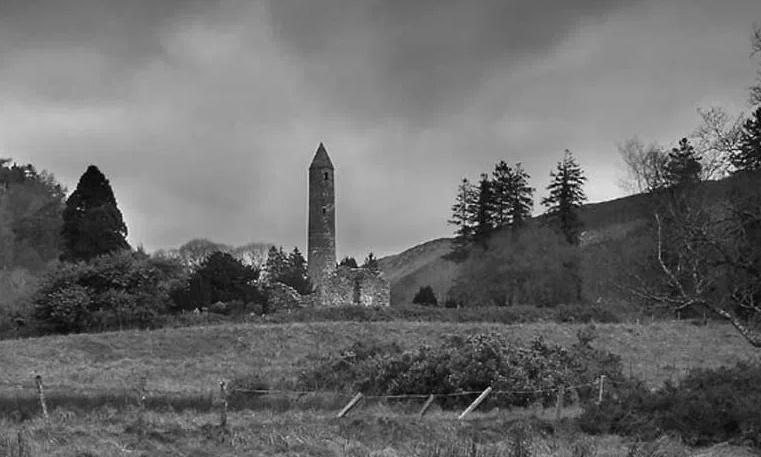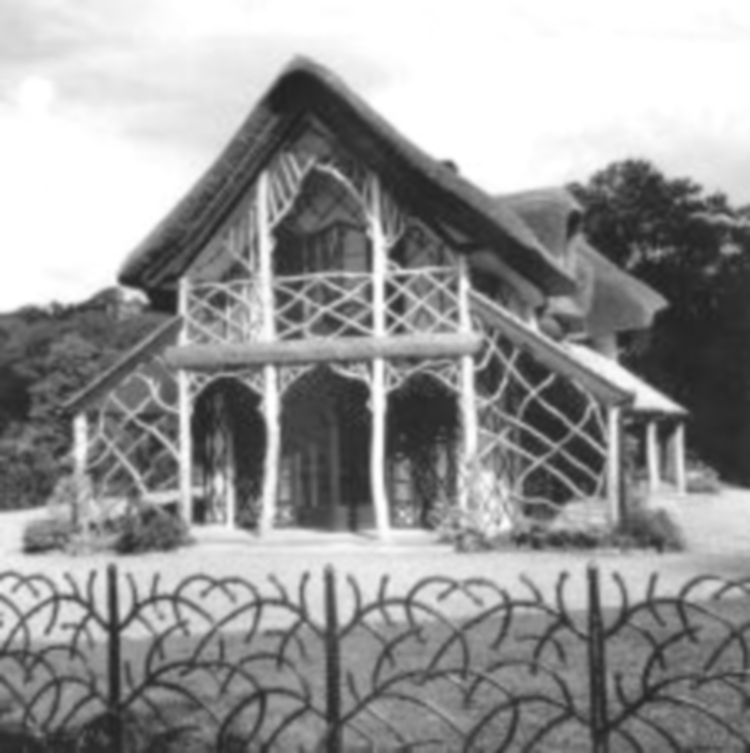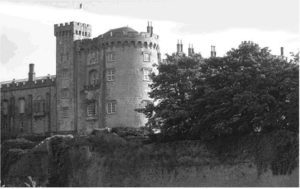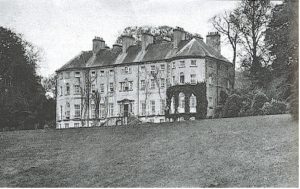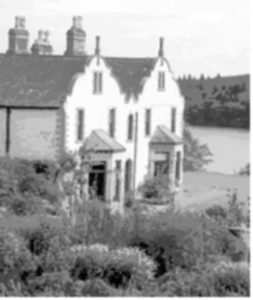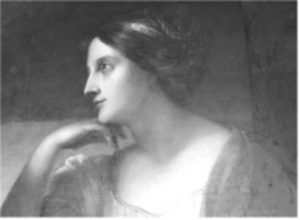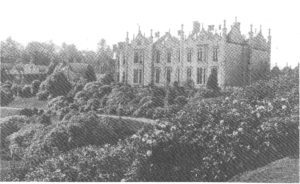Childers of Co. Wicklow
By the time 13-year-old Erskine Childers and his orphaned siblings arrived at the gorgeous 15,000-acre wooded demesne of Glendalough House in 1883, his uncle Charles and aunt Agnes had four children, two daughters and then two sons. Their eldest daughter Frances, born in December 1877, never married and settled in Bath. The next daughter Dulcibella arrived as a Christmas Day present in 1879; she too remained a spinster, passing away in the summer of 1956. It was for her that Erskine named the fictional yacht in “The Riddle of the Sands”. The eldest boy Robert was born in March 1881 and named for his uncle who had been killed by the Zulus two years earlier.
Click HERE for access to the printed book.
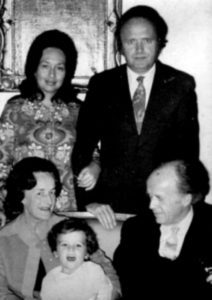
Childers Family
Carden of Tipperary
The old Barnane towerhouse, recorded as inhabited in 1654,[1] was used as a dwelling up to about 1750 by the early generations of Cardens of Barnane. The first Carden to settle in Barnane was Jonathan, grandson of ‘the Patriarch’, John Carden, who moved to Tipperary from Cheshire about 1665, and settled in Templemore.Jonathan, as the eldest son, should have inherited Templemore, and it is thought he was disinherited because of his marriage to a Catholic named Bridget Bagot. It was his younger brother, John, who inherited Templemore and founded the main branch of the Tipperary Cardens. Soon after coming of age Jonathan leased the “castle, town and lands of Barnane”. Jonathan died in 1703 aged only 28, and he bequeathed his estate to his wife and son, John III, who was then only three years of age.
[1] Civil Survey, 1654, Co Tipperary, Vol. 1, p. 24
[2] Carden, The Cardens of Barnane, Part 11, p. 43. It has been suggested that the Cardens came from Lincolnshire rather than Cheshire. Arthur Carden, Carden of Barnane, Working Draft, p. 8
Click HERE to for printed book information.

Byrne of Wicklow
The O’Byrnes are descended from a king of UI Faelin, Broen (Bran) Mac Maolmordha, who died in 1052. They probably retreated to Rossahane and spread southeast into Shillelagh and County Carlow, northeast to Rathdrum and the coast of Arklow and on up to Glendalough. According to a letter from the Archbishop to the Pope, written in 1216, St Kevin’s Church in the mountains had for 40 years been waste and desolate and a den of robbers and thieves (propaganda ?), who were doubtless displaced refugees from Kildare who had no title to the lands they lived upon. The reputation had not been helped by the events of “Black Monday” in 1209 when the citizens of Dublin were massacred at Cullenswood (near Ranelagh) during a festival celebration. The English, Norman and Gaelic settlements coexisted in the 13th century mainly through lack of power to undertake anything other than cattle raids.
Click HERE for access to the printed book.

Butler of Tipperary
The Butler association with Cahir began with James Gallda Butler, the illegitimate son of the 3rd. Earl of Ormonde who was born around the year 1400. His mother was Catherine, the daughter of the Earl of Desmond.
James Gallda, of Cahir, was appointed by his brother, the 4th Earl of Ormonde, to be the keeper of the county with the right to maintenance of the necessary troops.[1] This appointment was disastrous as James Gallda had his own agenda and was closely involved with the Desmonds who were rivals of the Ormondes in Munster.
This rivalry ripened into enmity when the War of the Roses broke out in England between the Houses of York and Lancaster. The Ormondes supported the House of Lancaster and the Desmonds that of York. That bitter English war found expression in Ireland when the forces of the Butlers of Ormonde and the Fitzgeralds of Desmond fought a battle at Pilltown in 1462. On that occasion the Ormondes were defeated. This long running dispute continued intermittently until 1565 when the last private battle fought in Ireland took place at Affane, Co. Waterford. The Desmonds were defeated on that day.
[1] Eoghan O’Neill The Golden Vale of Ivowen
Click HERE for further information.

Butler of Ormonde
The magnificent Kilkenny Castle was the main residence of the Butlers of Ormonde from the time of its purchase in 1391 by the 3rd Earl right up to the middle of the 20th century. The stone castle was originally built by William the Earl Marshall in 1260 on the site of the older wooden structure erected there by Strongbow. Over the centuries the castle was extended and improved until by the end of the 18th century the edifice that stands today was in place. In addition the graceful and ancient town of Kilkenny grew under the patronage and stability offered by the Butler family in every century.
Click HERE for further information.

Butler of Mount Juliet
Edmund the 6th Butler (f. 1280 – 1320), from whom descended the Ormonde line, had at least two sons and his second son, John was the ancestor of the Viscounts Ikerrin, later Lords Carrick. He was settled in Tipperary in an area in and around Ballingarry, at Lismolin Castle. His neighbours were the fierce, determined O’Meaghers whose homeland was adjacent in Clonakenny in the barony of Ikerrin (an Anglicisation of the Gaelic Ui Chairin). The Butlers were able to survive in their castle at Lismolin because of their willingness to adapt and because of the power of their cousins who were the lords in Kilkenny Castle and Palatinate Lords of much of Tipperary. Another tenacious family of Norman descent, the Fannings ruled from their strong castle in Ballingarry, nearby.
Click HERE for further information.

Mount Juliet
As Hubert Butler, that exceptional man of great insight and international fame said modestly, ‘the Butlers of Maidenhall were minor gentry’. Maidenhall is near Bennetsbridge in Co. Kilkenny. The family took up residence there in the mid 1800s. Before that it was built and occupied by a Henry and Frances Griffith in the mid eighteenth century.[1] Henry was an intellectual and an entrepreneur[2] and his wife was a writer[3]. Hubert Butler found them a most extraordinary couple and in his book Escape from the Anthill he devoted the first chapter to them under the title Henry and Frances.
[1] On a Taylor and Skinner Map of the 18th century it was noted as being in the ownership of the Flood family.
[2] Henry got a grant from parliament for starting linen manufacturing on the Nore. He built a factory and his house – Maidenhall c. 1745. An expected second grant did not materialize and as Henry was heavily mortgaged his business was ruined. He and Frances turned their hands to novel writing and Frances, in particular, was quite successful. Henry was also able to make a living from his writings.
[3] She was the first English translator of Voltaire.
Click HERE to buy the printed book.

Bryan of Co. Kilkenny
Jenkinstown estate was situated on the banks of the Nore at Ballyragget, Co. Kilkenny. The rolling countryside and the sweep of the Nore at Ballyragget combined to make the Jenkinstown estate one of the most beautiful in the county.
Thomas Moore, the celebrated 19th century poet and songwriter, was a frequent visitor at Jenkinstown. It was while staying there he was inspired to write “The Last Rose of Summer” one of his best known songs set to an adaptation of “The Groves of Blarney”. Thomas was very friendly with George Bryan and his social connections in Kilkenny where he attended and took part in the Kilkenny Private Theatre Productions initiated by the Powers of Kilfane. With the passage of time the friendship between the Bryans and Thomas Moore (and his wife Bessy Dyke) became deep and enduring. The Moores visited Jenkinstown many times and while both families were in Paris in 1822 they socialized on a daily basis, exchanging presents and dining together
Click HERE for further information.

Naughty Margaret
Bruen of Wexford and Carlow
It was reputed that Henry Bruen of Oak Park Carlow and of Coolbawn, Co. Wexford was not a handsome man. Apparently he was responsible for completing the magnificent entrance to Oak Park and the story goes that when it was finished he had a plaque erected on which there was an inscription as follows:
‘What can’t men and money do?’
According to local lore, a Carlow wit passing by, wrote on the plaque in reply:
All the men and money of Adam’s race, Couldn’t put a decent nose on ould Bruen’s face.’
Be that as it may, the Bruens were a distinguished and notable family in both Wexford and Carlow for many decades.
Click HERE for further information.

Coolbawn
Briscoe of Co. Meath
The first of the Briscoe family to have been established in Ireland would appear to have been Thomas Briscoe, who was granted over 500 English acres of land in south west Tipperary, in the Barony of Clanwilliam in lieu of the £100 he had adventured to the Commonwealth.[1] By the late eighteenth century they were principally resident at Tinevane, an estate on the Tipperary-Kilkenny border near Carrick-on-Suir. According to Burke’s The Landed Gentry of 1879 the first of this family was Henry Briscoe, who was a J.P. for counties Tipperary, Kilkenny and Waterford. The author did not appear to know anything about the antecedents of Henry Briscoe.
Henry, later a J.P., who was born in 1753, pursued a career in the military in the 1st regiment of horse in which he was enlisted in 1770. Five years later he married Margaret Sneyd and they had three sons and six daughters, four of whom married. The dowries that had to be provided with those ladies must have proved to be a drain on Henry’s finances.
[1] Prendergast’s Cromwellian Settlement of Ireland.
Click HERE for access to the Briscoe book.

Bellinter House

